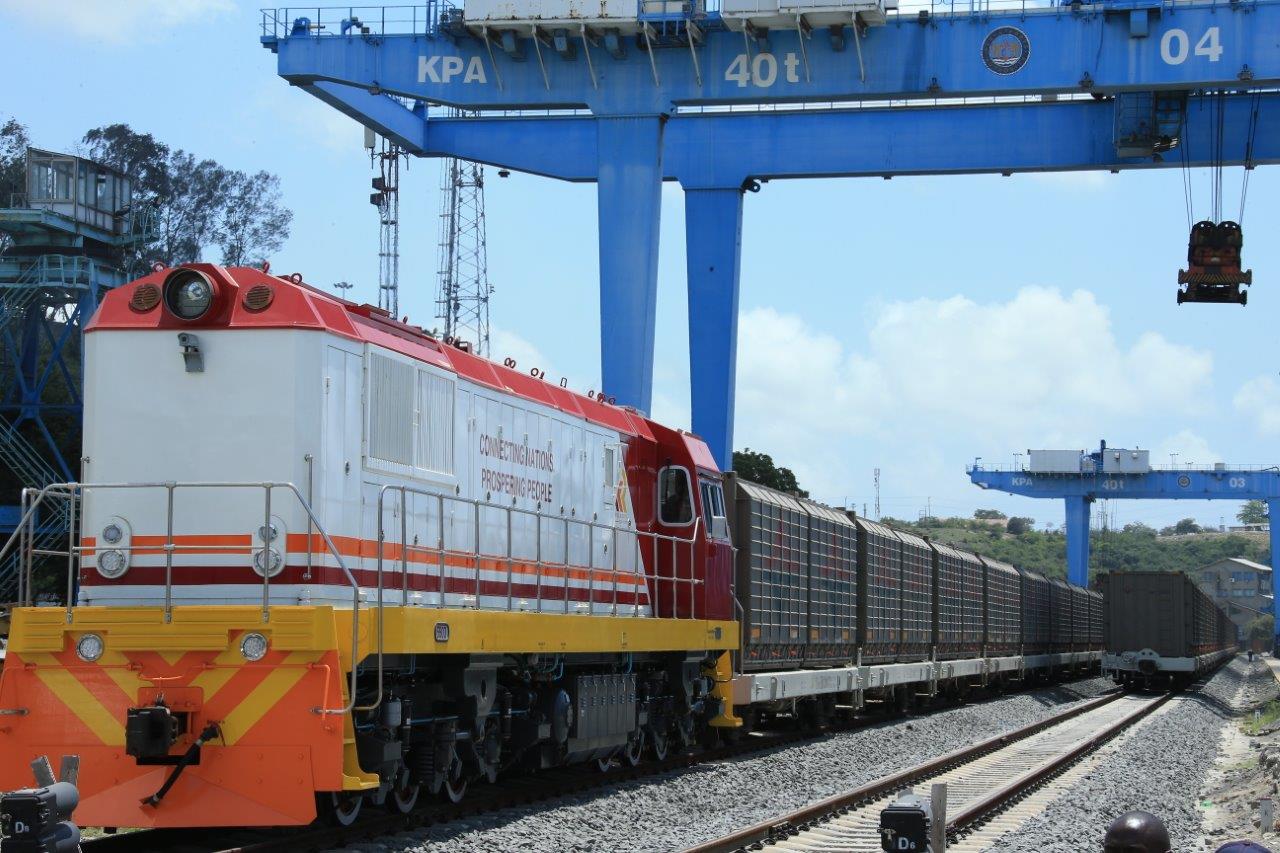Rail cargo from Port of Mombasa registers significant rise
Mombasa – February 7, 2018
FOURTEEN vessels docked at the Mombasa Port Container Terminals loaded and discharged cargo volume of a total of 32,740 Twenty Feet Equivalent Units (TEUs) in the week ended January 31st.
Containers discharged (full and empty) from the ships for inbound domestic and transit markets accounted for 15,531 TEUs while export containers registered 17,209 TEUs. The vessels registered ship average working time of 1.69 days (Period between first and last slings) as import container dwell time recorded 3.92 days.

During the week under review in-bound cargo increased by 3,771 TEUs or 32.06 percent compared to the previous week. Similarly within the same period cargo loaded onto the vessels went up from 14,813 TEUs to 17,209 TEUs, an increase of 2,396 TEUs or 16.17 percent.
Containers delivered out of the port by the road transport grew from11, 111 TEUs to 11,865 TEUs while the rail transport also increased from 273 TEUs to 438 TEUs. This is an indication that most shippers still prefer road transport to move their cargo .On the other hand the increase witnessed in the rail transport is quite significant considering that it has been recording less than 300 TEUs for a long time.
The trend shows that cargo haulage from the port to Nairobi by train is expected to increase considerably following the announcement of the reduced tariffs for the Standard Gauge Railway cargo. The Kenya Ports Authority has given a rebate on tariffs in-order to promote the use of its Inland Container Depot Nairobi by Nairobi and Transit clients who wish to nominate its Nairobi depot as a point of cargo delivery. The charges for handling of a local 20 foot is now 80 USD from 103 USD while a 40 footer container will cost 120 USD instead of 157USD. Transit bound container will now cost 60 USD for a 20 footer down from 90USD while a 40 footer will cost 90 USD down from 125 USD.
Meanwhile the total container population at the port decreased to 13,857 TEUs from 17,160 TEUs registered in the previous week. This new recorded container population comprised 3,868 TEUs which were awaiting Pick-up Order submissions by respective Customs Agents, 4,099TEUs imports were ready to be collected and 1,255TEUs full exports (Nominated/Un-nominated). The others in the yards included 477 TEUs transhipment, 3,278 TEUs empties and 880 TEUs at the Customs Warehouse.
Import population breakdown during the week showed that containers bound for the domestic market accounted for 3,658 TEUs while transit destined containers recorded 6,233TEUs. The traditional transit market leader, Uganda recorded 4,141 TEUs followed by Tanzania with 1,304 TEUs and South Sudan with 250 TEUs. Other transit destinations included the Democratic Republic of Congo which accounted for 214 TEUs, Somalia with 176 TEUs while Rwanda and Burundi registered 136 TEUs and 12 TEUs respectively.
Operations at the Conventional cargo terminal reported 22 general cargo vessels docked at the berths, discharged 231,187metric tonnes and loaded another 8812 metric tonnes for export. An average of 34,286metric tonnes were handled per day with bulk wheat imports recording 95,937metric tonnes to emerge the leading commodity.
Other cargoes included 45,830metric tonnes of bulk clinker imports, 41,895metric tonnes of bulk coal, 26,355metric tonnes of bulk fertilizer and 160 metric tonnes of live cattle. The terminal also handled 1479 units of motorcars and 217 trucks.
Deliveries of general cargo by road transport recorded 152,882metric tonnes while conveyor belt delivered another 78,305metric tonnes .In the meantime forecast for the next two weeks shows that the Container Terminals are expected to receive 14 vessels while the conventional cargo terminal is expected to receive 19 ships.